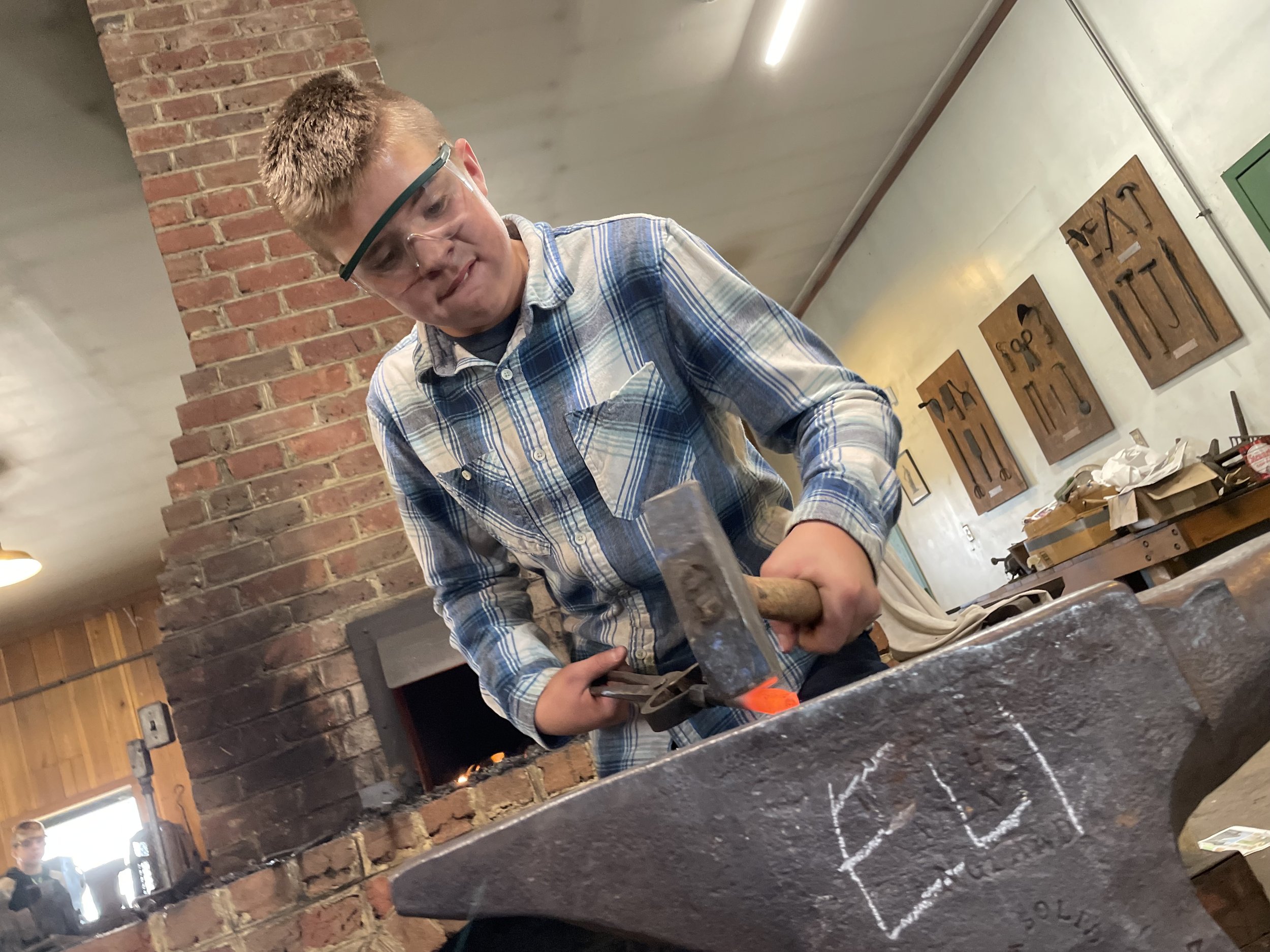The Anvil
My arm is still sore as I attempt to type this.
Bang, Bang, Bang, Ting, Bang, Bang, Bang, Ting…Wooshhhhh
The sounds of a blacksmith’s shop.
My boys were turning 13, and we had signed them up for an all-day blacksmithing class at a local historical park. Not long after we showed up, we were hard at work, each at our own forge, heating up metal and beating it into shape.
If there is anything we learned, its that blacksmith’s like their curls. Literally everything we made started by pounding the end of our stock into a sharp point and then bending it into a pretty little monkey tail of a curl at the end.
Heating up metal to a glowing yellowish orange, setting it on the anvil, and then hammering away at it. We learned by trial and error how to get the shapes we wanted, and the shapes we didn’t want. We learned what happens when you don’t get it hot enough (not much) and what happens when you forget its in the heart of the fire and it gets too hot (it burns up!). Soft hits don’t move much metal, but are more precise. Hard pounding creates fast change, but imprecise.
Heat up the steel, take it to the anvil, swing the hammer, take it back to the fire.
The one part of the process that never changed: the anvil.
Often we were told to “square up” our round stock of steel as we drew it out, only to then round it again to a point. Apparently this is faster. As we did so, many of us thought that we needed to hit the round stock on one side, then rotate 90* and hit it again, then continue rotating it 90* and hitting it, in a circle. The instructor informed us that that was unnecessary. He said that we should instead simply rotate 90* and then rotate back to the original side we were hitting. Why? Because, he explained, “When you are bringing the hammer down, the anvil is doing the work on the other side.”
The anvil is a solid, unmoving mass, acting like the other side of a sandwich, providing the opposing force for the other side of the steel. We don’t see the impact of the anvil right away. We only see what the hammer is doing. Without the anvil, we wouldn’t make any progress at all. We couldn’t make intricate designs or functional forms.
The anvil became our home, always returning to it for the formation of our steel.
As our stories have taken shape and we’ve become who we are today, there has always been an often unseen strength holding us securely, providing an opposing force for both the aggressive and the delicate formation. God is at work. He allows the fire, and welcomes the hammer, but he is the unchanging Anvil–study, stable, substantial–at work in the unseen spaces, shaping us to be the men he designed before the beginning of the world.
Consider for a moment, in some of the parts of your story that have shaped you- how was the Anvil present?
______________________
Cody Buriff, Chief of Resources and Experiences

